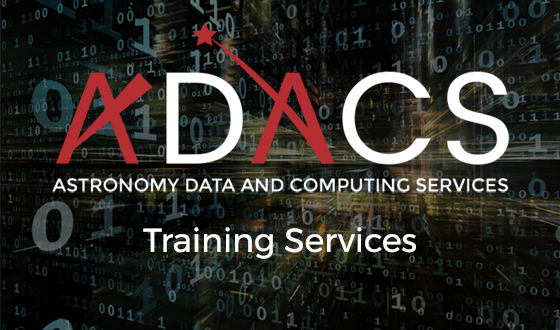
ADACS LMS: online webinars
ADACS LMS
Introduction to Computing Clusters
This tutorial is intended for those having very little experience with operating in a computing cluster environment. It provides simple introductions to: the concept of parallel computing; the hardware configuration of computing clusters; working with queue systems and logging in with SSH.
Introduction to Structured Query Language (SQL)
SQL is a standard language for storing, manipulating and retrieving data in databases. This tutorial covers: Relational Database Management System (RDBMS), Data Definition Language, Data Manipulation Language, and Astronomy Examples with SDSS.
Scientific Data Visualization with Python
This tutorial covers the basic principles of scientific data visualization with working examples using the python language.
Introduction to Version Control with Git
This tutorial covers the basics of Version Control with working examples using Git.
Introduction to MPI
In this tutorial, we introduce the Message Passing Interface (MPI). MPI is the “industry standard” for writing message passing programs on High Performing Computing platforms. This tutorial will introduce you to MPI through working examples using the Python language.
Introduction to HDF5
In this tutorial, you will learn about HDF5. HDF5 enables fast programs via clever features like efficient memory management, and organised storage of data next and metadata in tree-like structures—making it an excellent format for scientific computing and parallel I/O.
Introduction to astropy
This tutorial introduces the structure and core functionalities of astropy, a community astronomy package written in the Python language.
IVOA Table Access Protocol
In this tutorial, we will introduce the Table Access Protocol, or TAP. TAP provides a flexible yet standard access to different kinds of databases within the Virtual Observatory.
